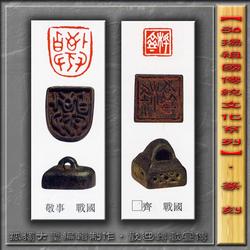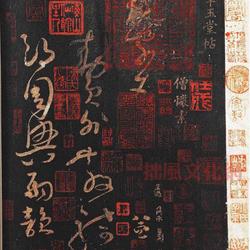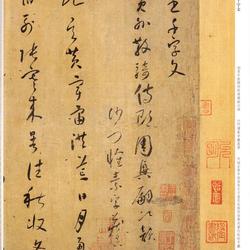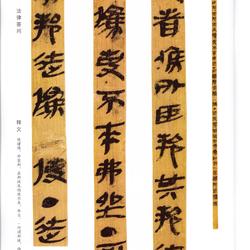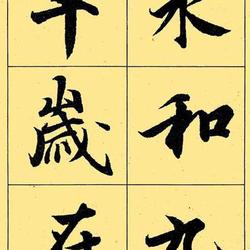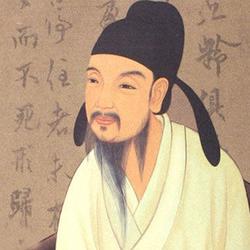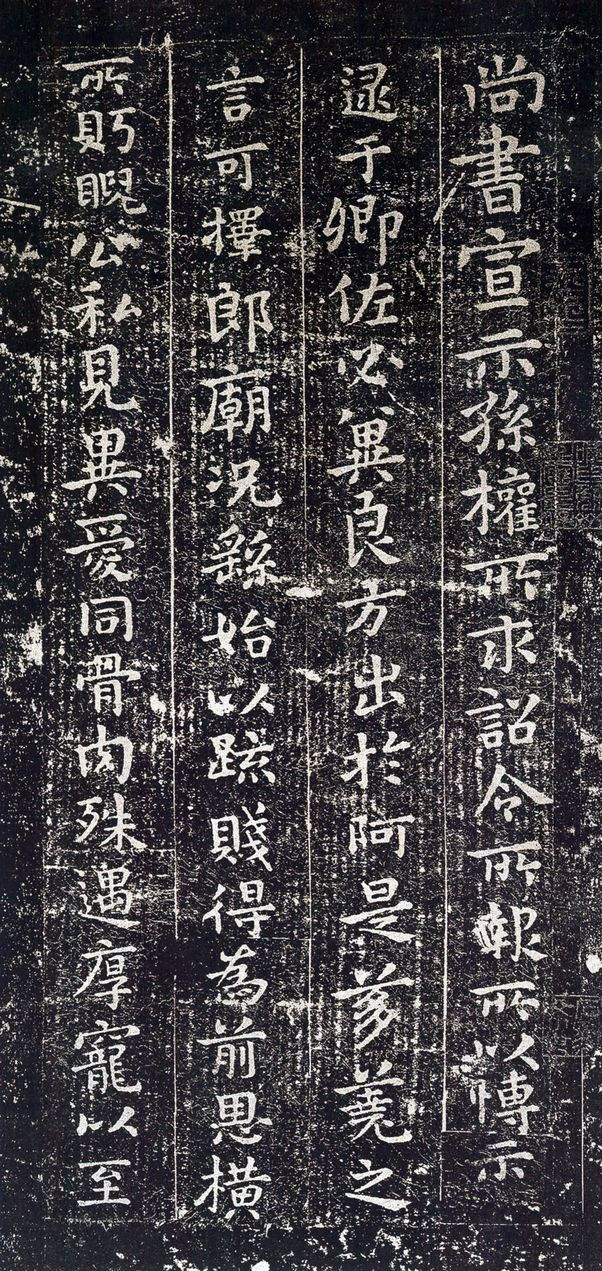
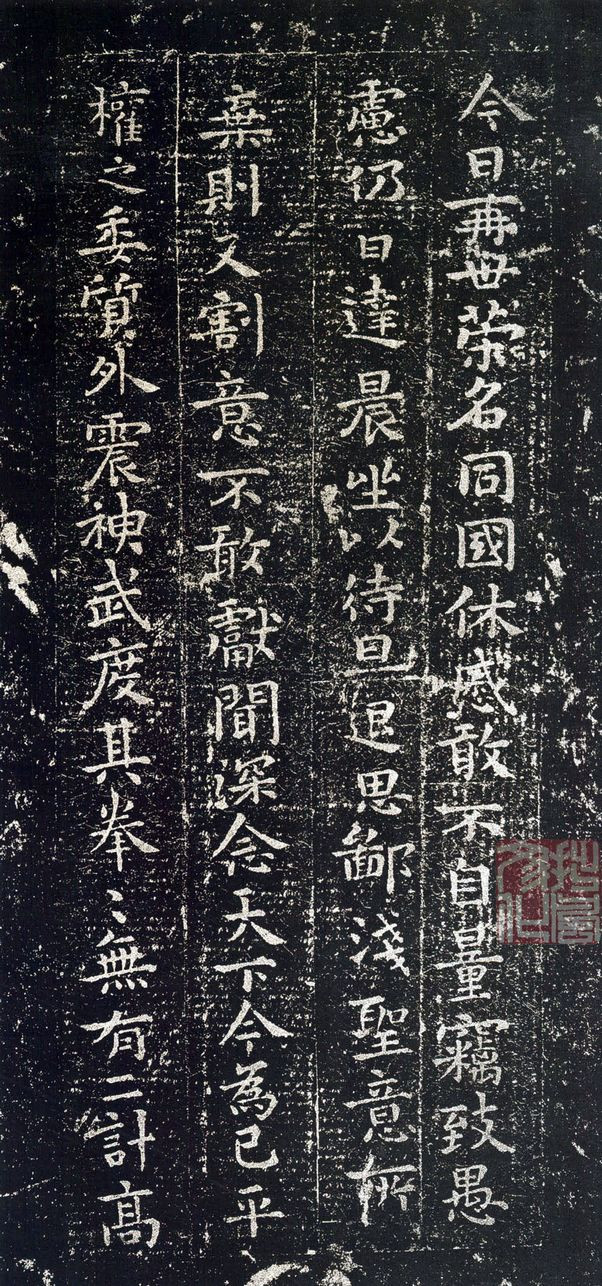
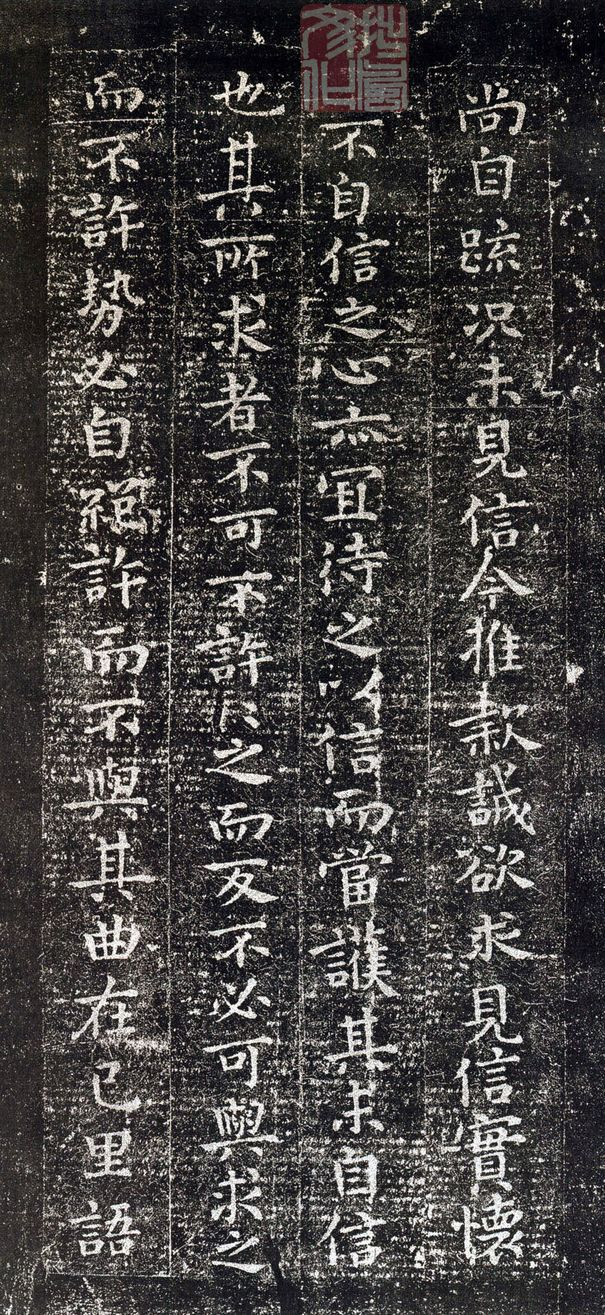
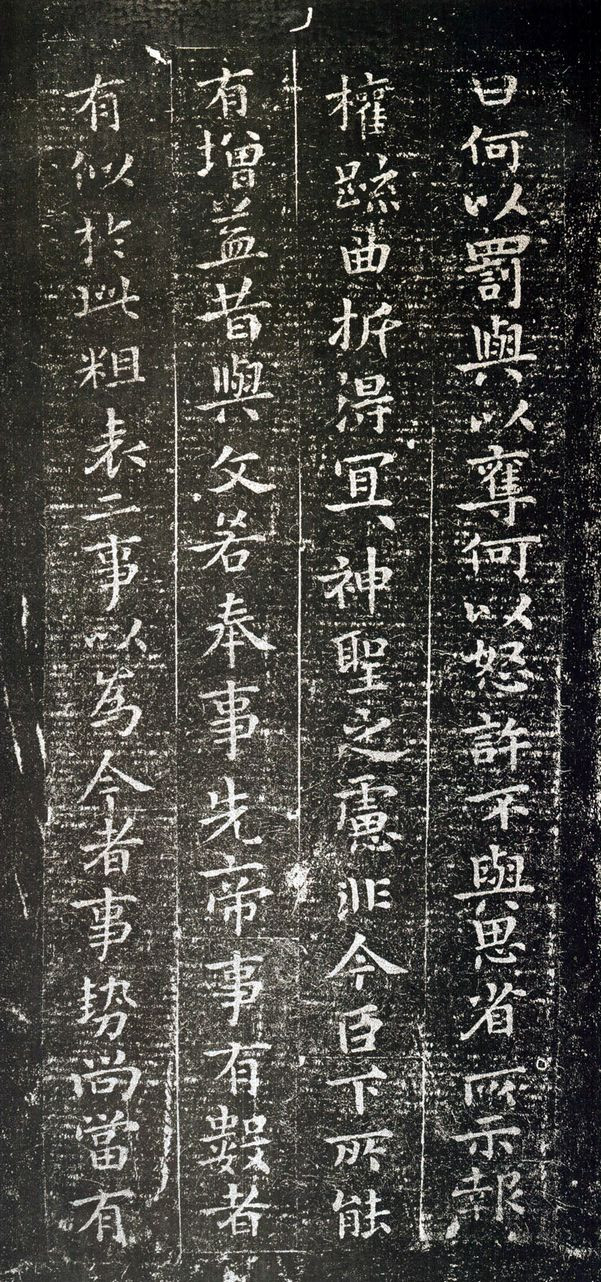
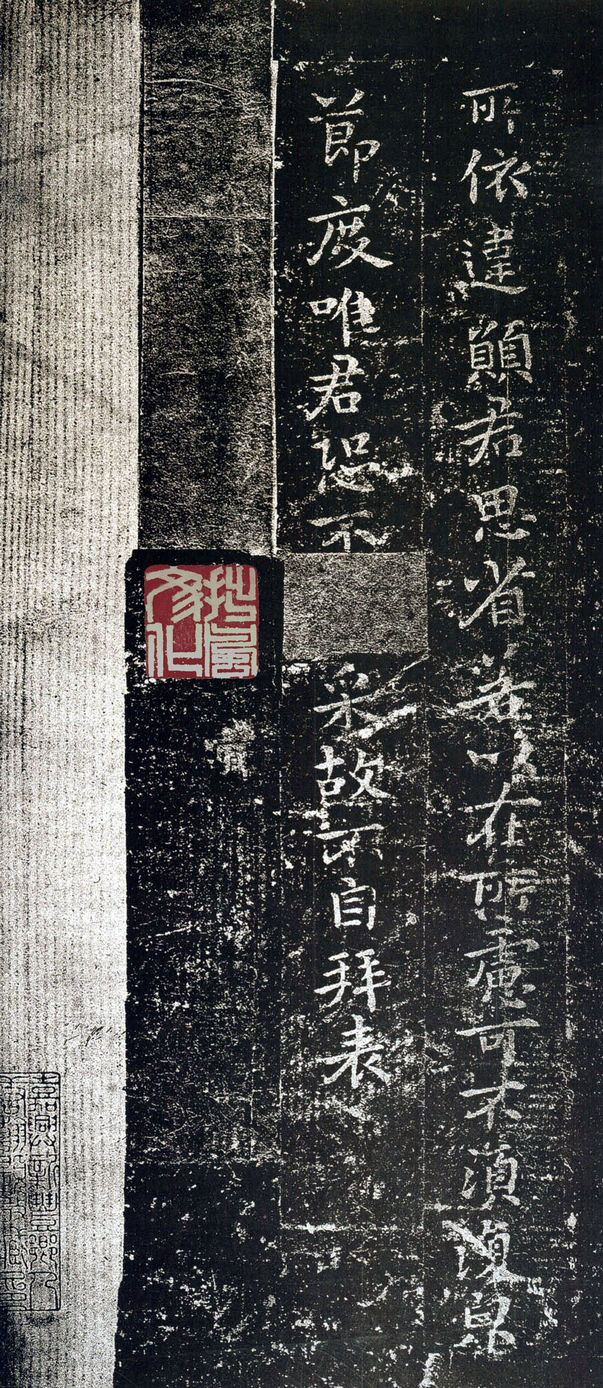
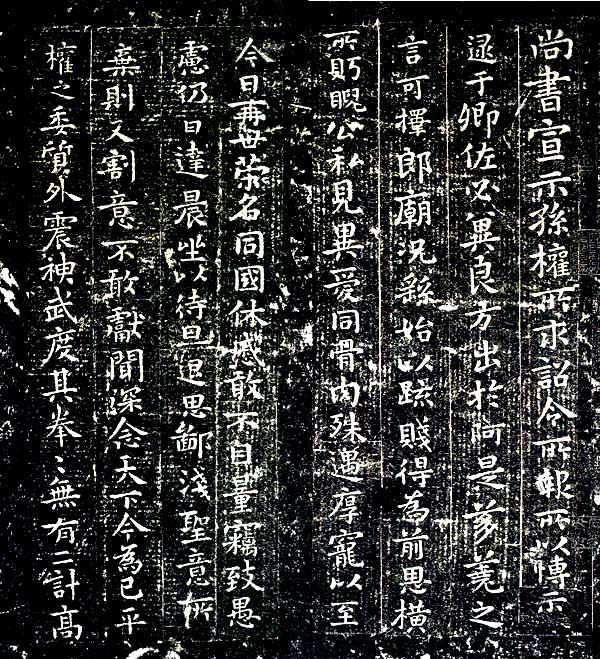
"Declaration Form" Collection of the Palace Museum, Beijing
Zhong Yao (151-230), whose courtesy name was Yuan Chang, was known as "Taifu Zhong" in the world, and was a famous calligrapher in the Wei Dynasty during the Three Kingdoms period. He lived in an era when official script and regular script were changing. As Yuan Yuan said in his "General Commentary on Calligraphers": "Since the Han and Wei dynasties, although the calligraphy has been different, most of them have the style of official script and official script, so their constitution is ancient." Therefore, in his The real book also contains a strong sense of officialdom. His small regular script is slightly flat, with dense lines, thick stipples, fresh and vigorous brushwork, mellow and simple, and full of natural and simple meaning. Zhang Huaiguan of the Tang Dynasty commented in "Shujuan": "The real calligraphy is quaint and elegant, and the Tao is in line with the gods, and Yuan Chang is the first." He also said: "Yuan Chang's real calligraphy is exquisite, surpassing that of a master, and both strong and soft. Between the stipples, there are many It has a unique interest, it can be said to be deep and profound, and more than quaint. There is only one person since the Qin and Han Dynasties." Zhong Yao has worked hard in calligraphy. He once said: "I have been concentrating on calligraphy for thirty years. When I sit and speak, I point to the edge of the seat. He would write it down a few steps away, and when he was lying down, he would write it down on the bedding and wear it." This shows his dedicated attitude towards learning. Once, at the home of Wei Dan, a famous calligrapher at that time, he saw an article written by Cai Yong on calligraphy. He couldn't get it, so he beat his chest and vomited blood, but Cao Cao saved him with the Five Spirit Pills. After his death, Yao Yin found his tomb and found it, and the book progressed greatly, which shows his persistent pursuit of art. His handed down works such as "He Jie Biao", "Declaration Table", "Ji Zhi Biao", "Li Ming Biao", etc. are all outstanding representatives of early regular script.
Xiao Yan, Emperor Wu of Liang Dynasty, said: "The skillful situation and dense formation are better than self-luck." The brushwork is simple and vigorous, graceful and natural. Legend has it that Wang Dao sewed the watch into his belt when he was traveling eastward and took it with him. Later, it was passed to Yi Shao, who in turn passed it on to Wang Xiu. Wang Xiu then took the watch and put it to rest in the earth, never to see the light of day again.
The "Declaration Table" that can be seen now is only an engraving, and most commentators do not believe that it was a copy based on Wang Xizhi's original version. It first appeared in the "Chunhua Pavilion Notes" of the Song Dynasty, with a total of 18 lines. Many of the pavilion calligraphy and individual copies in later generations were reprinted, and the Song rubbings should be the better ones. Compared with Zhong Yao's other works, this post shows a more mature style and atmosphere of regular script in terms of brushwork and structure. The stipples are vigorous and simple, and the fonts are broad and flat, which fully expresses the style of the Wei and Jin Dynasties. The artistic characteristics of regular script that are becoming mature. The style of this post directly affected the formation of the appearance of Erwang Xiaokai (as can be seen from "Huang Ting Jing", "Le Yi Lun", "Thirteen Lines of Luo Shen Fu", etc.), and then affected the creation of Xiaokai in the Yuan, Ming and Qing dynasties. , such as Zhao Meng, Zhao Mengfu, Wen Zhengming, Wang Chong, Huang Daozhou, etc. What is more historically significant is that the stippling rules and structure rules possessed by this post influenced and promoted the arrival of the peak of regular script - Tang Kai script. Therefore, Zhong Yao's "Declaration Table" can be said to be the originator of regular script art.

